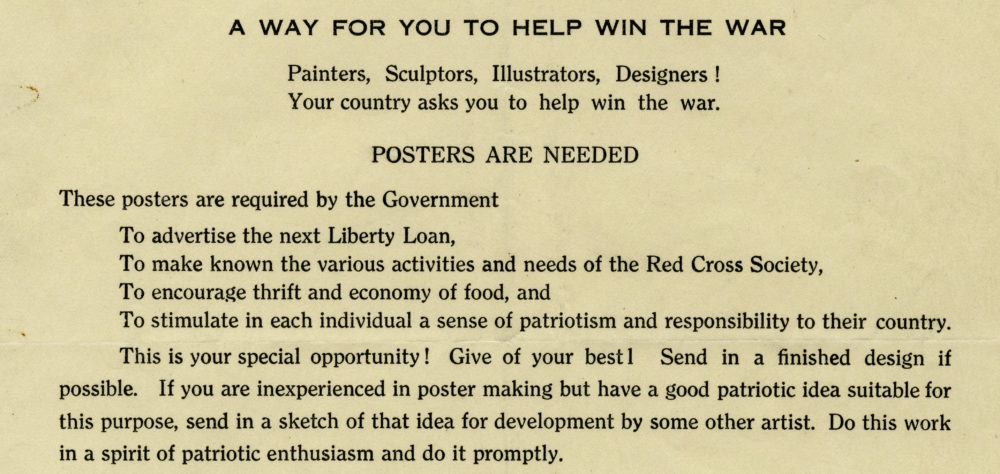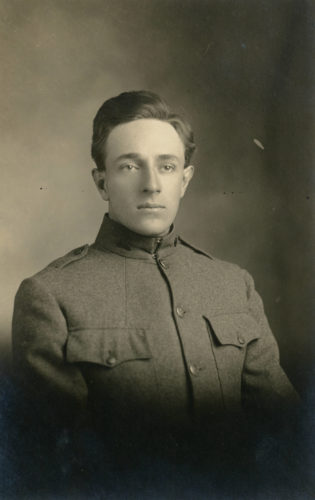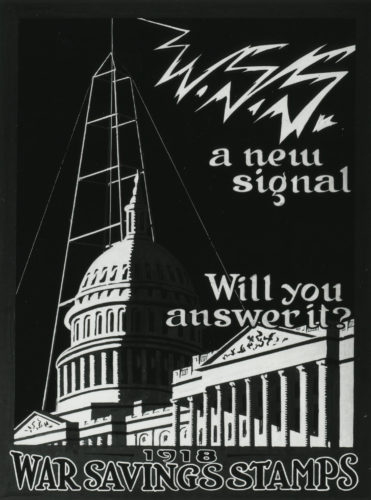“The time has come for Art to do its bit in our war”


As part of the Little Stories of the Great War: Ohioans in World War I project, a two-year grant funded by the National Endowment for the Humanities, the Ohio History Connection has digitized archival collections from the Cincinnati Art Museum relating to the Art Academy of Cincinnati’s role in World War I, and the many ways its students supported the war effort on the home front and abroad. These archival collections include letters, postcards, and photographs from former students stationed at training camps or serving overseas; submissions for a patriotic poster competition and a national call for posters; and correspondence between the Academy’s director and various organizations seeking wartime publicity materials.
After the United States joined World War I, nearly all of the Academy’s male students enlisted, and many museum staff either enlisted or left their positions to pursue other war work. Many women at the Academy withdrew as well, taking on factory jobs. Remaining students made surgical dressings, knit sweaters and socks, and were able to put their more specialized skills to use by painting topographical maps, technical pieces, large landscapes for use as range-finding targets at artillery training schools, and perhaps most importantly, war posters.
Joseph H. Gest, director of the Academy and the Cincinnati Art Museum, maintained regular correspondence with Oliver Dennett Grover from the Division of Pictorial Publicity of the Committee on Public Information. As the chairman of the Middle West, and a well-established painter and art instructor himself, Grover asked Gest to recruit artists from Cincinnati and the surrounding areas to contribute to the national call for war posters. The U.S. Government charged the Division of Pictorial Publicity with recruiting artists to design posters that promoted patriotism and encouraged Americans to support the war effort in a variety of ways, including conserving food and fuel, purchasing war bonds, growing produce in war gardens, and volunteering with organizations like the Red Cross and Knights of Columbus.

In addition to the national call for posters, the War Savings Committee and the American Institute of Graphic Arts hosted a national poster competition to secure the best advertisements for the 1918 war savings stamps campaign. Artists were encouraged to highlight in their designs themes like the importance of thrift, thrift as a patriotic duty, and financing the war. The competition was open to students in grades 7-12, as well as art school students at the college level.
Archival collections documenting the competition and Ohio’s participation include the competition rules and guidelines, correspondence between Gest and the Ohio War Savings Committee and other competition spokespeople, entry tickets, and black-and-white photographs of poster submissions from students in the Cincinnati area.
In a letter to Gest, the chairman of the Ohio War Savings Committee writes, “The time has come for Art to do its bit in our war and the Public Schools of Ohio are truly now in the service.” Language like this emphasized the importance of fulfilling one’s patriotic duty and reminds us that Americans in every trade could share their talents and expertise to support the war, beyond serving in the more traditional sense as a soldier.
Visit the World War I Collection on Ohio Memory soon to learn more about Ohio’s role as we continue to add more little stories of the Great War!
Thanks to Kristen Newby, project coordinator at the Ohio History Connection, for this week’s post!



Leave a Reply
You must be logged in to post a comment.